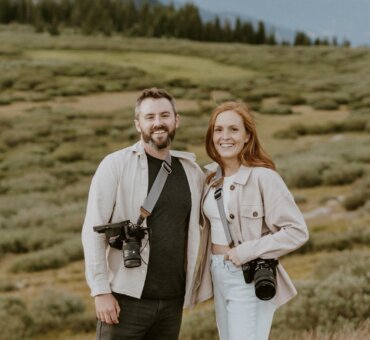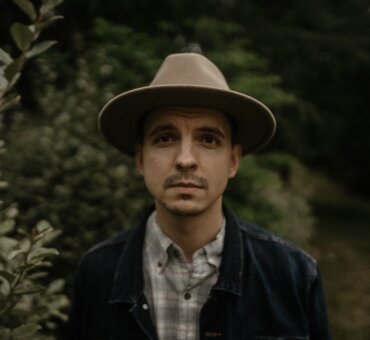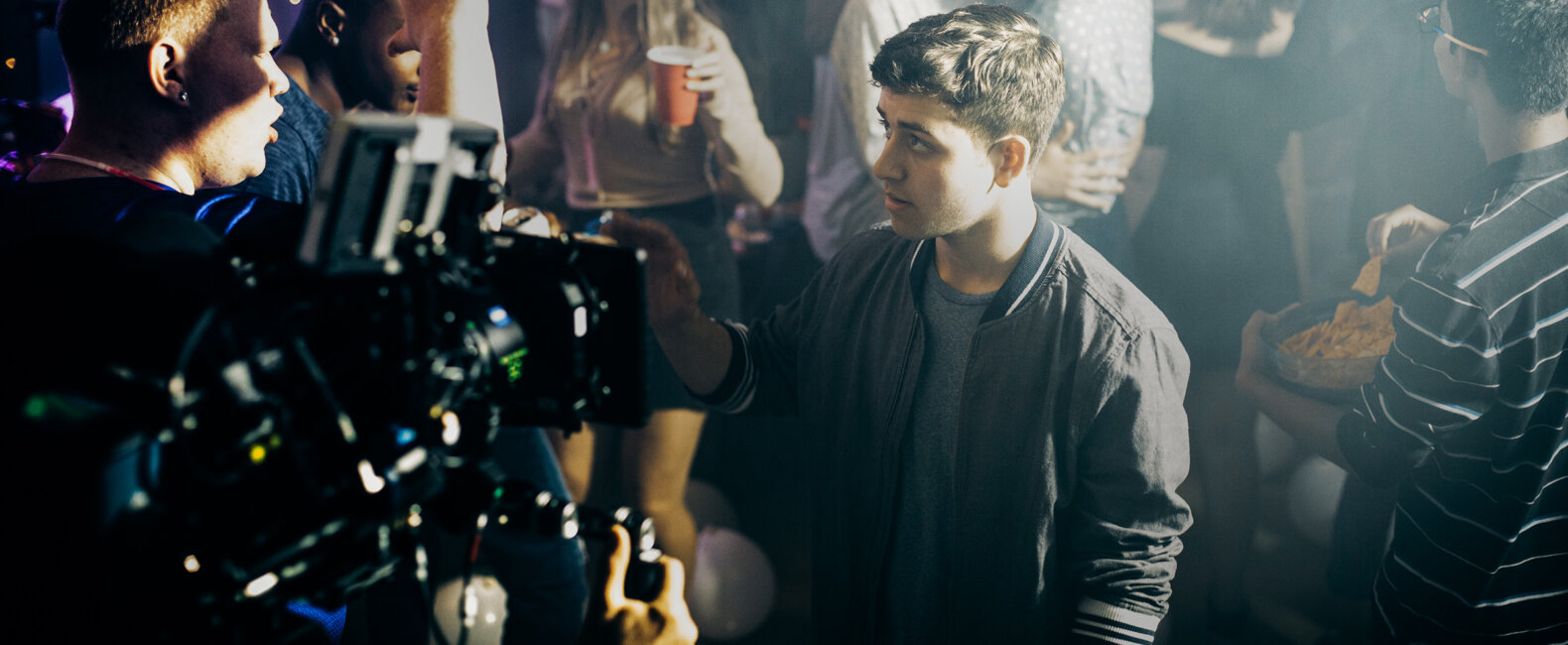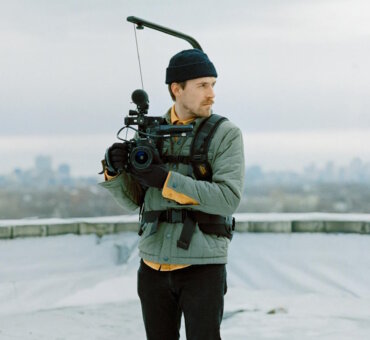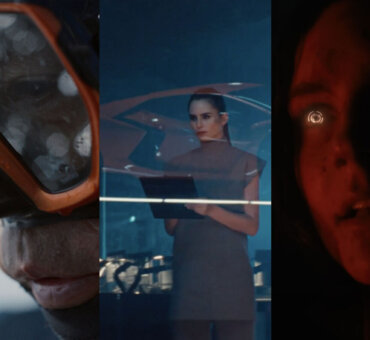Commercial filmmaking is experiencing a tectonic shift. Clients are expecting better projects for smaller budgets, and if you’re part of the old guard, you may get a few cold sweats thinking about when or where the next project will come from. If you’re an up-and-comer, though, the outlook is a bit brighter. Just take it from Dan Walser, Executive Producer at Neighborhood Film Co., and Ryan Smith, Creative Director at Counsel, who just wrapped up our commercial Find the Music You’ve Been Missing.
“There’s a model of commercial filmmaking that’s cracking at the foundation right now…it’s creating stress at the top of the pyramid, but it’s also creating a lot of opportunities for the rest of us,” Dan told us.
It turns out our hyper-targeted, small-to-medium budget commercial fit squarely into a conversation about this changing climate in commercial filmmaking, so we talked to Ryan and Dan about not only how they knocked our project out of the park, but also why this is an exciting time for filmmakers to jump into the commercial game.
Watch our commercial below, and get an inside glimpse into the future of filmmaking from Dan Walser and Ryan Smith.
For commercial projects, how do you get started on the right foot?
Dan Walser: It all starts with a vision. A clear concept on the front end of the process is extremely valuable. I don’t want to skip over that. It was exciting because Ryan really had a clear vision from the beginning for Musicbed’s commercial — the hook, the approach from a production standpoint, and a great overall idea. In smaller budget projects, you’re trying to be as strategic as possible, and when you have this clear vision you can use your prep time more efficiently, and you can have those important conversations a lot earlier. Ryan, there were two or three ideas floating around initially, right?
Ryan Smith: There were a few different concepts. We had an idea about an orchestra performing without music, but in the end, the house party idea was the one that rose to the top. We wanted something that worked well for a broader audience. This approach felt the most appropriate for agency creatives and filmmakers.
How do you keep a great concept from drifting?
Dan: Sometimes the concept drifts [Laughs]. We were lucky in this case.
Ryan: One of my former clients had infinite money. And they didn’t care if they changed the entire project last minute. It cost them a fortune, and it was a nightmare for us. In reality, a lot of people can’t afford to make last-minute changes within a set budget. So really, the more you can communicate — from concept to production — on the front end, the better.
Dan: One tangible thing you can do is leverage what I call the “realities of production” to keep the ship straight. Once an idea starts to drift, communicate how the drift or those changes will actually affect scope, budget, timeline, and all of these hard logistics. Changes can add a week of prep time, 15 extras, or create three company moves on a one-day shoot. It’s really on you to speak up and let everyone know what their changes are going to implicate down the line. Most clients aren’t just thinking about your project. They may have 10 or 20 different initiatives going on, and their brains are going a million different directions. Stick to the creative vision from the beginning, which everyone loved on paper, and focusing your time and energy on executing that well. You end up with a better product versus not communicating proactively, not raising those flags, and just scrambling to make a drifted version in this chaotic, reactionary way.
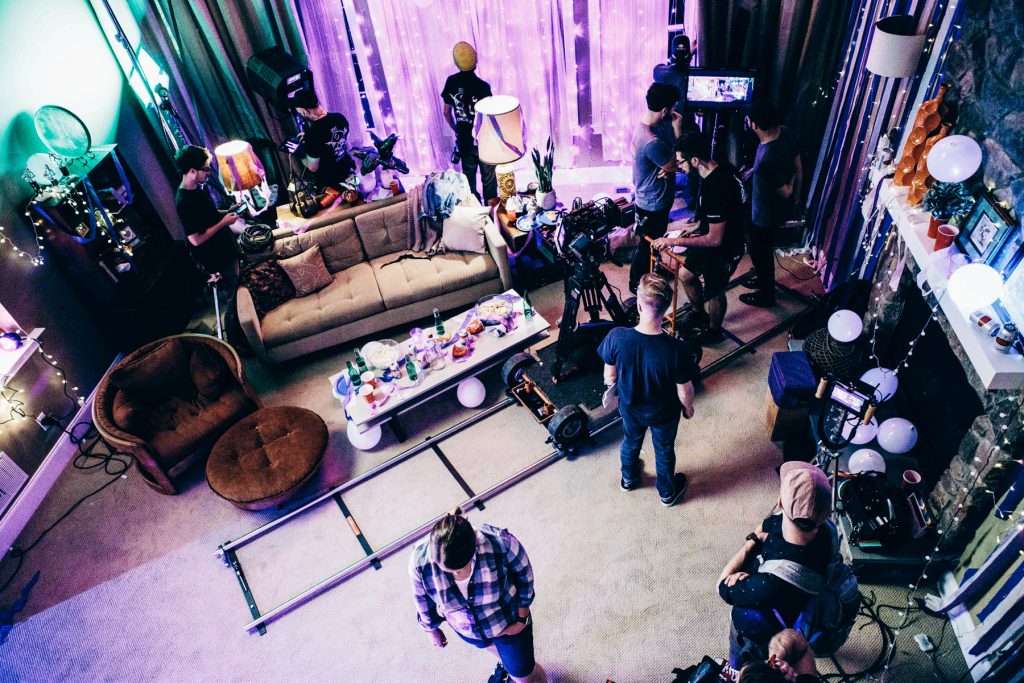
Did all of this work on the front end pay off in production?
Ryan: Absolutely. It’s important to set yourself up for success. Every concept intentionally had no dialogue, and that’s a big thing. It’s not a knock on Dan or Neighborhood, but talent is very expensive, so that was one of the main things we factored in from the very beginning. Always with the concepting process, I purposefully put a ton of limitations on myself. It helps the process move along quicker when you have a defined “sandbox.” We were able to play to everyone’s strengths — knowing that Musicbed is all about music and that Dan and [Director] Ricky [Staub] are so good at shooting raw and real feeling footage. We wanted to keep it to one location and focus on high production value — something our DP, Minka Farthing-Kohl, is a pro at.
Dan: We looked at where we were going to get the most bang for our buck. Obviously, the production value had to be very high, so we couldn’t take any shortcuts that would impact what would happen on camera. There were smaller things, like deciding to shoot in Philly, where our roots are so deep, that helped us focus on making the actual project as high quality as it could be. But deciding to go with non-actors was huge. Ricky Staub, as a director, is really great at working with nonactors (note: you can read more on that here) and he has a younger sister with friends that were willing to be in the commercial, plus we have interns that are at Drexel University, Temple, and University of Pennsylvania. All of a sudden we could fill a house with 30 young people all through a few phone calls, versus spending thousands of dollars with a casting director.
And they’re pretending to party all day. That’s fun, right?
Dan: Sometimes casting nonactors can be a huge benefit. In this case, we were shooting the same concept for several hours, and the whole thing rides on the house party having energy. Not that all actors are devoid of excitement, but they’ve been there before. Just think if your friend’s older brother asked you to be in his commercial. These extras were excited just to be there, and it was helpful to the concept itself. Something like a restraint, or a sandbox as Ryan put it, can require you to be a little more inventive and you end up with a better project because of it.
Ryan: That really was the basis for this whole project.
Dan: It’s a trickle effect, right? The more you plan and set yourself up from the beginning, the more you can put into production down the line. There was no money for a second scouting unit, so once we decided on the house, we really had to commit to it. To Ryan’s point earlier, communication is critical. When Ricky found the house he liked, it was on us to sell it to Musicbed and make sure it was going to work for every aspect of the concept. Once they felt safe making that decision early on, based on Ricky and Ryan’s pitch, we had more time on the front end to let our production designers be inventive about how they can decorate at a lower cost.
Ryan: It’s a little scary when you make those decisions, but if you do your due diligence you can trust your people to make it work.

Would you say this is a good time to be making commercials?
Dan: There’s a model of commercial filmmaking that’s cracking at the foundation right now — the roster/rep model. They have these massive overheads with directors who are used to a certain level of pay, and they can’t take smaller jobs. There’s a lot of “bottom half of the roster” directors at these big-fish production companies that are really struggling. Likewise, some of these mid-to-high level production companies that aren’t in say the top five of the industry are dying a slow death because they don’t have the newest directing “all stars,” but they still have a big roster and overhead to feed. This is all driven by a diminishing number of big budget projects, and a greater demand for lower-budget jobs that are still executed in a top notch way.
It’s creating stress at the top of the pyramid, but it’s also creating a lot of opportunities for the rest of us — for the companies who do really great work, but they can take a commercial job that costs $50,000. We have to be nimble enough to do that million-dollar commercial but also efficiently execute for a $40,000 ad. There’s a lot of companies that can’t do that. Too many directors need to make $10,000 a day or more. There are obviously insanely talented companies, but it’s just a matter of mass. The amount of money available.
Ryan: I started my company because I was tired of hearing, “no, we can’t afford that.”
What gives young filmmakers the advantage?
Dan: There’s a large percentage of creatives in the client and agency space who are fine sticking with the old-world model of creating a commercial: boards, reps, treatments, etc. But more and more you see creative directors, instead of sending out an email to reps, they’re watching stuff on Vimeo. They see something they like and look up who directed it. They think, I just found this guy or girl on Vimeo who’s shooting the shit out of their projects so I’ll just contact them directly. All of a sudden you’re shooting this $50,000 commercial. While the roster/rep model may be breaking down, there are more people open to finding filmmakers who aren’t part of the old model.
Ryan: So many filmmakers are a few projects away from landing these commercials. I think there’s a perfect opportunity for them to outshoot bigger companies. We know a few people who are out shooting “smaller” projects. You get to do what you love, the projects are cool, and it’s not like you’re doing it for free.
Dan: That’s a great point. Talented young filmmakers should be very optimistic right now.





































































